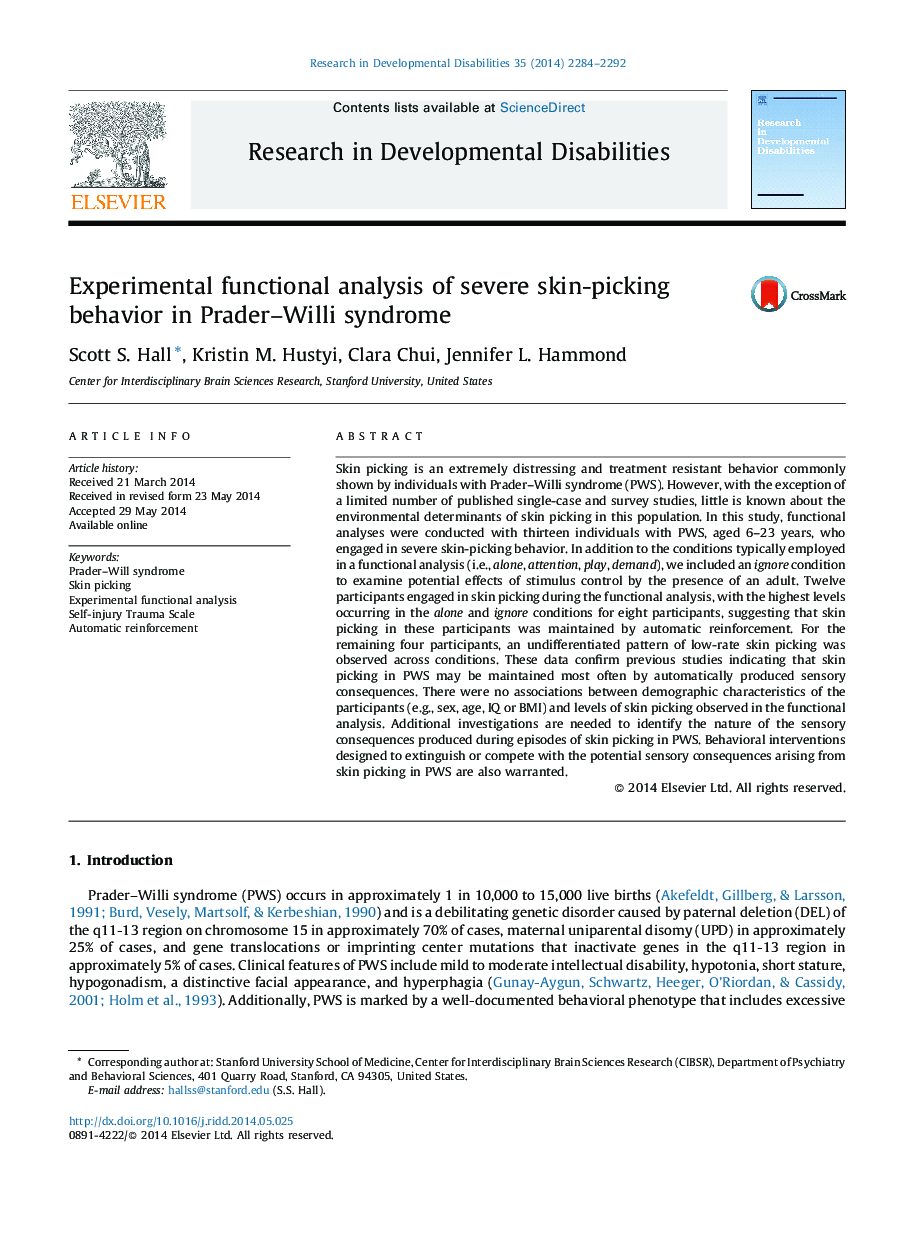| Article ID | Journal | Published Year | Pages | File Type |
|---|---|---|---|---|
| 10317353 | Research in Developmental Disabilities | 2014 | 9 Pages |
Abstract
Skin picking is an extremely distressing and treatment resistant behavior commonly shown by individuals with Prader-Willi syndrome (PWS). However, with the exception of a limited number of published single-case and survey studies, little is known about the environmental determinants of skin picking in this population. In this study, functional analyses were conducted with thirteen individuals with PWS, aged 6-23 years, who engaged in severe skin-picking behavior. In addition to the conditions typically employed in a functional analysis (i.e., alone, attention, play, demand), we included an ignore condition to examine potential effects of stimulus control by the presence of an adult. Twelve participants engaged in skin picking during the functional analysis, with the highest levels occurring in the alone and ignore conditions for eight participants, suggesting that skin picking in these participants was maintained by automatic reinforcement. For the remaining four participants, an undifferentiated pattern of low-rate skin picking was observed across conditions. These data confirm previous studies indicating that skin picking in PWS may be maintained most often by automatically produced sensory consequences. There were no associations between demographic characteristics of the participants (e.g., sex, age, IQ or BMI) and levels of skin picking observed in the functional analysis. Additional investigations are needed to identify the nature of the sensory consequences produced during episodes of skin picking in PWS. Behavioral interventions designed to extinguish or compete with the potential sensory consequences arising from skin picking in PWS are also warranted.
Related Topics
Life Sciences
Neuroscience
Behavioral Neuroscience
Authors
Scott S. Hall, Kristin M. Hustyi, Clara Chui, Jennifer L. Hammond,
